7 ’70s Restaurant Chains That Faded Fast And 9 We Wish Would Make a Comeback

The 1970s marked a vibrant era for restaurant chains, known for their plush booths, bountiful salad bars, and dishes drenched in cheese. While some names thrived, others vanished. This post explores seven chains from the ’70s that quickly disappeared and nine others that hold nostalgic value, deserving a modern revival.
1. Sambo’s
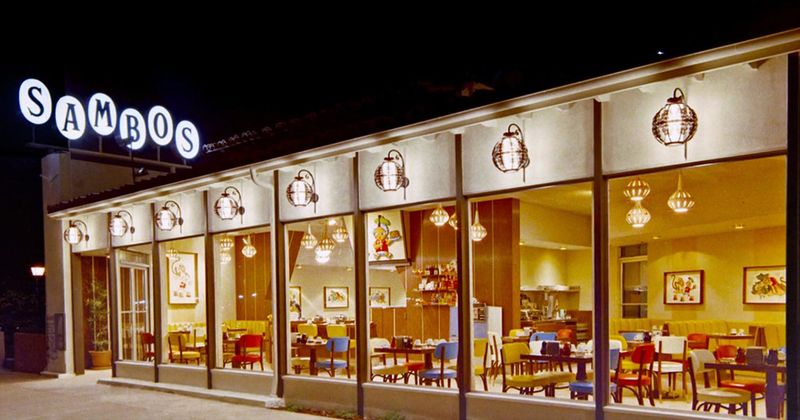
Sambo’s, once a pancake powerhouse, boasted over 1,000 locations at its peak during the ’70s. Known for its unique branding and breakfast offerings, it gained immense popularity. However, controversy regarding its name and outdated branding led to its rapid decline in the ’80s.
The decor, reminiscent of another era, featured bold colors and quirky art. This ambiance attracted families and individuals alike.
Despite its eventual closure, Sambo’s remains a memorable chapter in the history of American dining. Its legacy is a reminder of the cultural sensitivity required in branding.
2. Lum’s
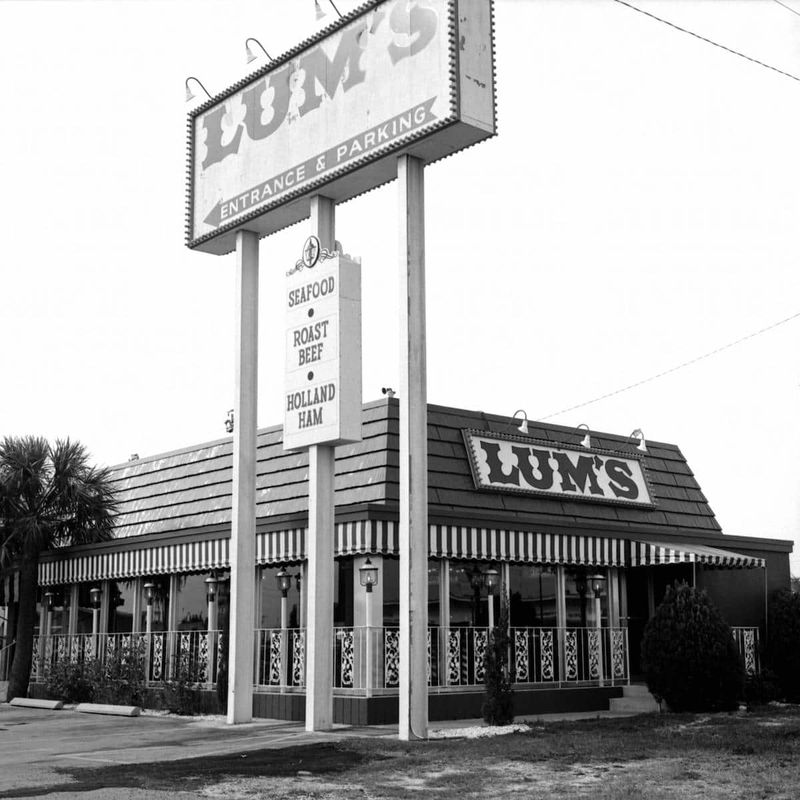
Lum’s, famous for hot dogs steamed in beer, captured the hearts of many food enthusiasts. The chain offered a diverse menu that included prime rib sandwiches, enticing both young and old.
Its signature dishes were a staple for many, and the quirky concept of steaming in beer added an extra flair. Unfortunately, poor management decisions in the post-’70s era led to its eventual closure.
Lum’s remains a fond memory for those who frequented it, symbolizing a time when culinary adventure met everyday dining. The nostalgia of Lum’s continues to linger among its former patrons.
3. VIP’s
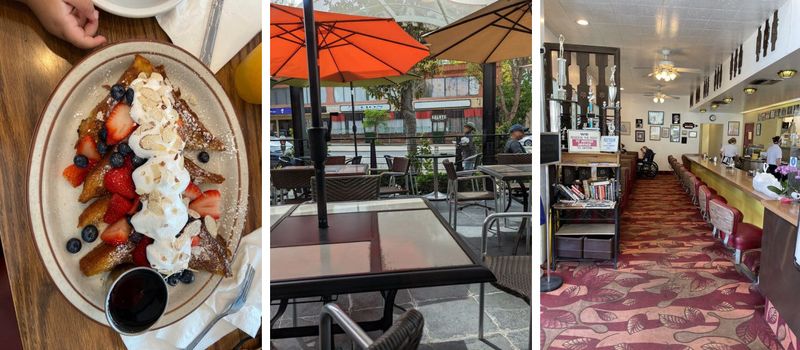
VIP’s was a beloved Pacific Northwest diner-style chain that prided itself on hearty breakfasts and late-night meals. Its popularity soared during the ’70s, serving as a haven for diners seeking comfort food.
The retro interiors and welcoming atmosphere made it a preferred choice for families and night owls. Yet, as national giants like Denny’s expanded, VIP’s struggled to keep up.
Despite its decline, VIP’s is remembered for its community-centric approach. The chain’s legacy highlights the challenges faced by regional players in a rapidly evolving industry landscape.
4. Red Barn
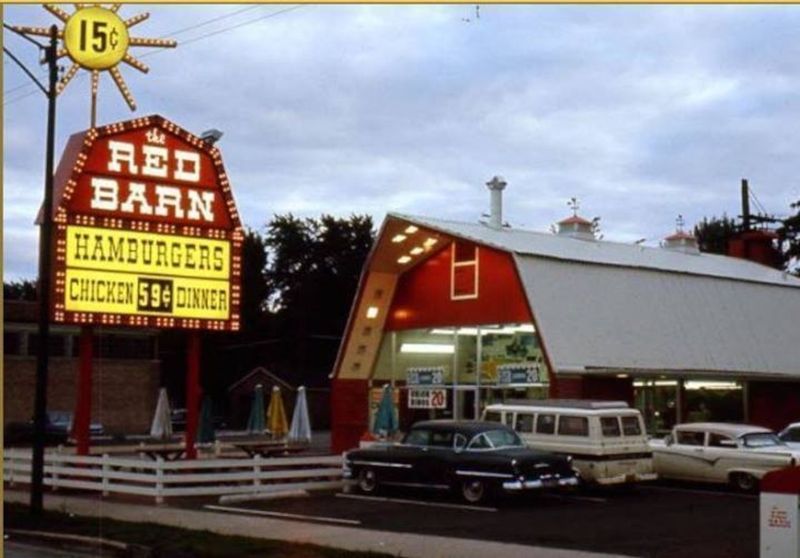
With its distinctive barn-shaped buildings, Red Barn quickly became a recognizable name in fast food. The chain’s menu featured the “Big Barney” and other unique offerings that drew in curious diners.
Despite its intriguing architecture and innovative menu, Red Barn couldn’t compete with fast-food giants like McDonald’s and Burger King in the long run.
The quirky charm of Red Barn remains a nostalgic memory for those who visited during its heyday. Its classic design and ambitious branding serve as a testament to creativity in the fast-food industry.
5. Gino’s Hamburgers
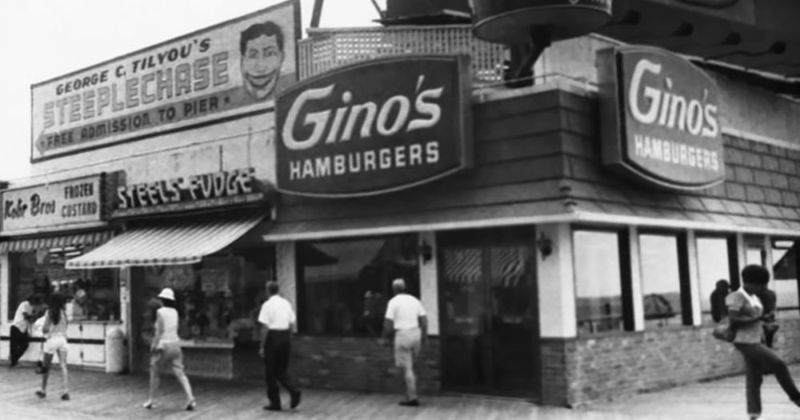
Co-owned by NFL legend Gino Marchetti, Gino’s Hamburgers was a hit on the East Coast. Known for its flavorful burgers and family-friendly setting, the chain enjoyed significant success.
The allure of its association with a sports icon added to its widespread appeal. However, it eventually merged with Roy Rogers and disappeared from the culinary scene.
Gino’s Hamburgers remains a cherished memory for its patrons, representing a time when sports and dining intersected uniquely. Its story highlights the dynamic nature of partnerships in the restaurant business.
6. Yankee Doodle Dandy

Yankee Doodle Dandy, a burger chain with a patriotic theme, captivated patrons with its lively ambiance. Flashy uniforms and catchy jingles created an unforgettable dining experience.
Its rapid rise was matched only by its swift decline, as competition intensified and trends shifted. Despite its brief existence, Yankee Doodle Dandy left a lasting impression with its unique branding.
The chain’s story is a reminder of the fleeting nature of trends in the restaurant industry. Its spirit lives on in the memories of those who experienced its vibrant culture.
7. Heap Big Beef
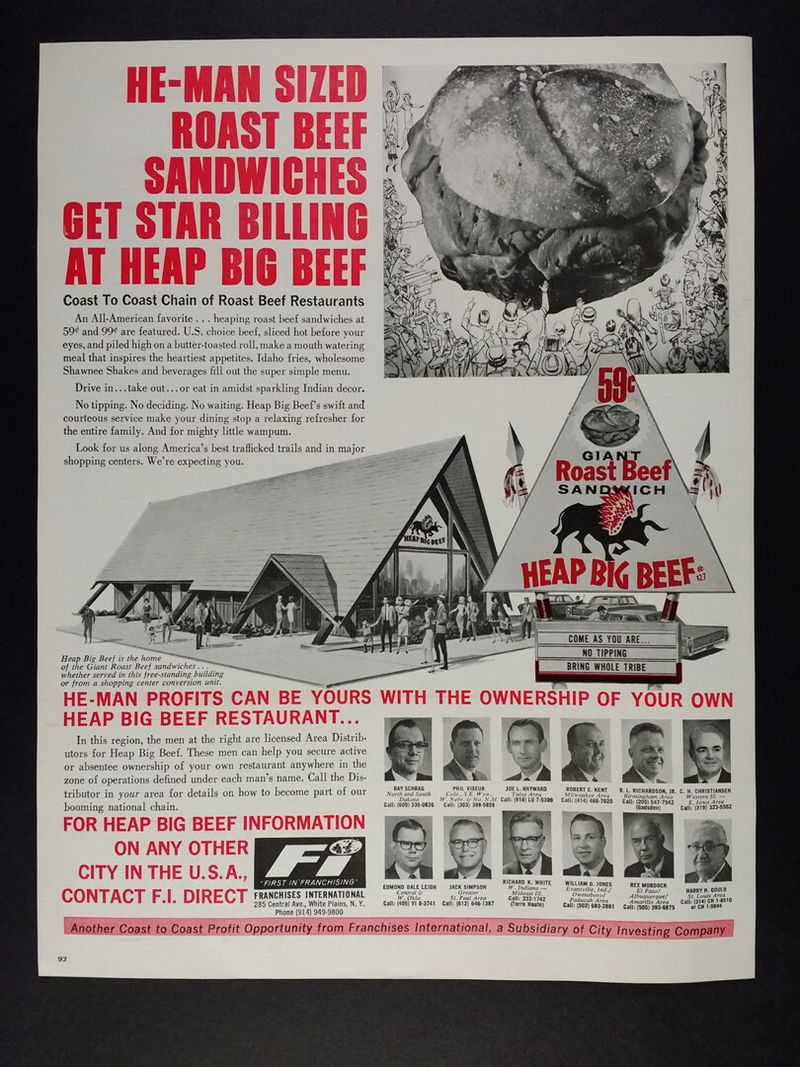
Heap Big Beef, with its peculiar name, was a roast beef fast-food chain that ventured into the competitive market. Its unique identity and thematic decor set it apart initially.
However, the chain quickly folded due to a lack of cohesive brand strategy and evolving consumer preferences. Despite its short lifespan, Heap Big Beef’s story is a captivating chapter in fast-food history.
The chain serves as a case study in the importance of brand adaptability and market awareness. Its rise and fall remain etched in the annals of restaurant lore.
8. Howard Johnson’s
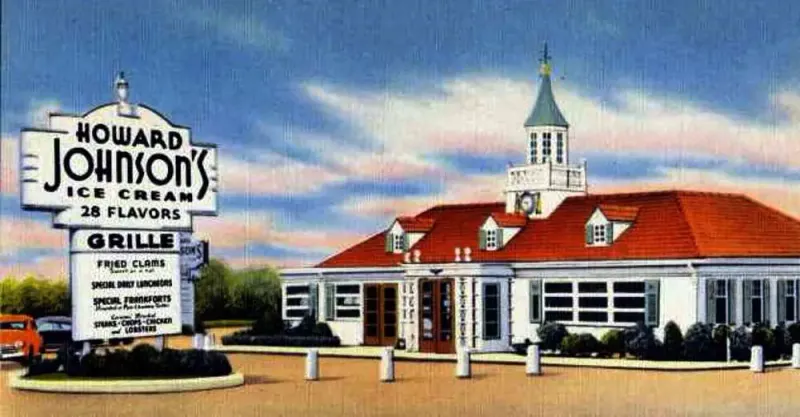
Once a staple along American highways, Howard Johnson’s was famous for its 28 ice cream flavors and distinctive orange roof. It offered a reliable dining experience for travelers and locals alike.
The chain’s retro charm, combined with modern updates, could capture today’s nostalgic hearts. Its widespread closure left a gap in the dining scene, leaving fans yearning for its return.
Reviving Howard Johnson’s could bring back the simplicity and comfort of road-trip dining. The brand’s legacy underscores the enduring appeal of classic Americana in modern dining culture.
9. Steak and Ale
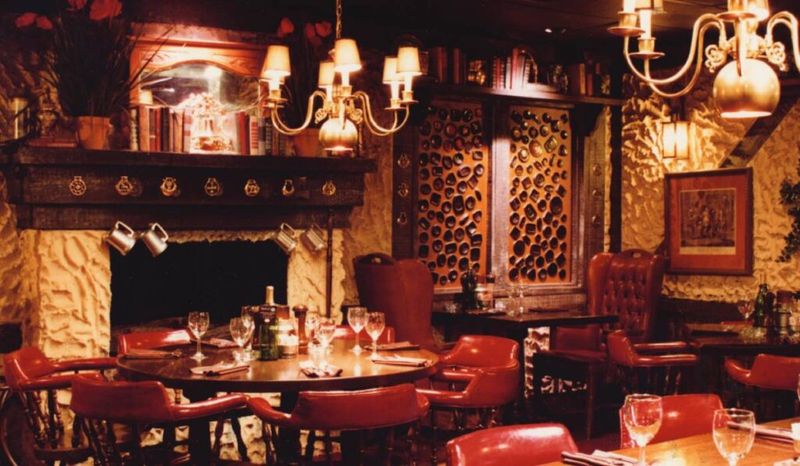
Steak and Ale, with its laid-back vibes, became a favorite for those seeking affordable steaks and a relaxed atmosphere. The chain’s iconic salad bar was a highlight for many diners.
Rumors of its comeback have circulated for years, with enthusiasts eagerly awaiting its revival. Its legacy is one of comfort and quality dining without pretension.
Bringing back Steak and Ale could offer modern diners a nostalgic experience with a twist. Its story is a testament to the lasting impact of casual dining done right.
10. Pup ‘N’ Taco
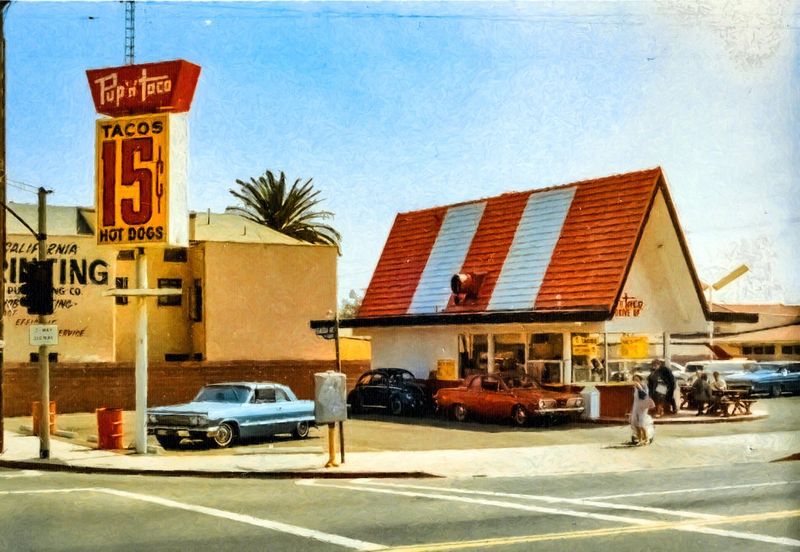
Pup ‘N’ Taco was a quirky LA-based chain offering an unusual mix of tacos, hot dogs, and slushes. The strange yet beloved menu attracted a loyal following.
Purchased by Taco Bell in the ‘80s, its unique offerings still inspire cravings among fans. Pup ‘N’ Taco’s spirit embodies the eclectic culinary landscape of Los Angeles.
The chain’s colorful history and innovative menu continue to intrigue food lovers. Its revival could add a fun and nostalgic twist to today’s fast-food scene.
11. Farrell’s Ice Cream Parlour

Known for its over-the-top birthday parties, Farrell’s Ice Cream Parlour was a childhood dream come true. Large sundaes and marching drums created a festive atmosphere.
The chain’s unique approach to celebrations made it a popular spot for families. Despite its decline, Farrell’s holds a special place in the hearts of many.
Reviving Farrell’s could bring back the joy and excitement of childhood celebrations. Its story highlights the importance of unique experiences in creating lasting memories.
12. Bob’s Big Boy (Widespread Version)
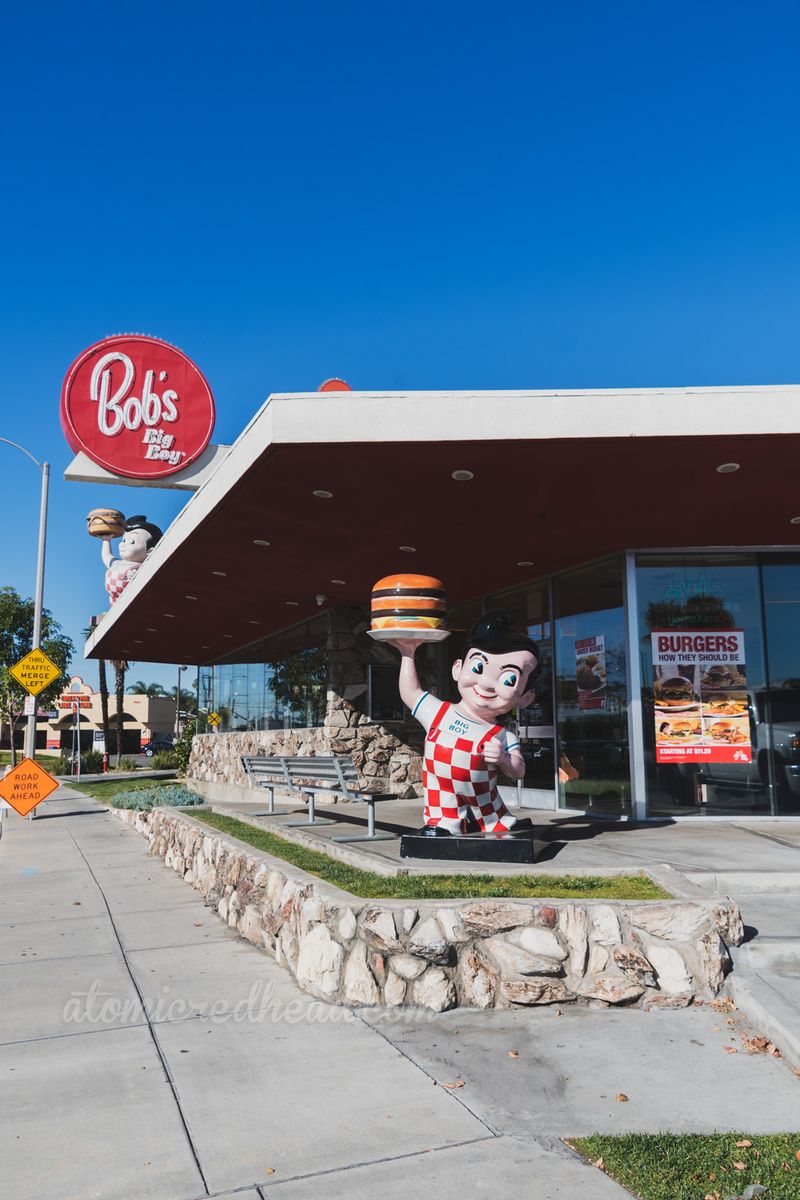
Bob’s Big Boy, though still existing in select locations, once had a widespread presence across the nation. Known for its classic double-decker burger and iconic Big Boy statue, it was a staple in American dining culture.
The chain offered a nostalgic diner experience that modern iterations can’t replicate. Its national presence is missed by many who remember its charm.
Reviving Bob’s Big Boy on a larger scale could reintroduce a beloved dining tradition to a new generation. Its enduring appeal remains a testament to its lasting impact.
13. Burger Chef
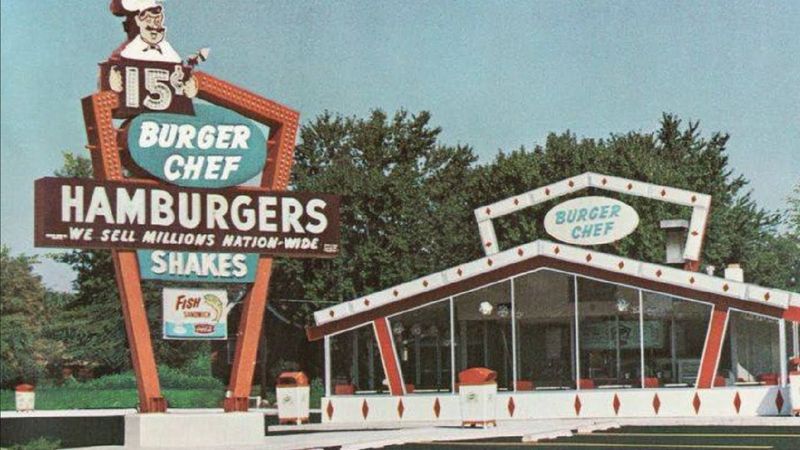
Burger Chef, once a formidable competitor to McDonald’s, introduced innovations like the “Funmeal,” which predated the Happy Meal.
The chain’s unique offerings and creative marketing strategies made it a strong player in the fast-food industry. However, it eventually faded as the competition intensified.
Fans of Burger Chef fondly recall its pioneering spirit and family-friendly atmosphere. A revival could celebrate its historical significance in shaping fast-food culture.
14. Chi-Chi’s

Chi-Chi’s brought Americanized Mexican food with flair, becoming a party destination in its heyday. The vibrant atmosphere was enhanced by live music and lively decor.
Though its salsa remains in grocery stores, fans miss the full dining experience. Chi-Chi’s embodied a spirited and festive dining culture.
A modern revival could tap into the current popularity of Mexican cuisine, offering a nostalgic yet fresh experience. Chi-Chi’s story is a reminder of the joy in cultural celebration through food.
15. Hot ‘n Now
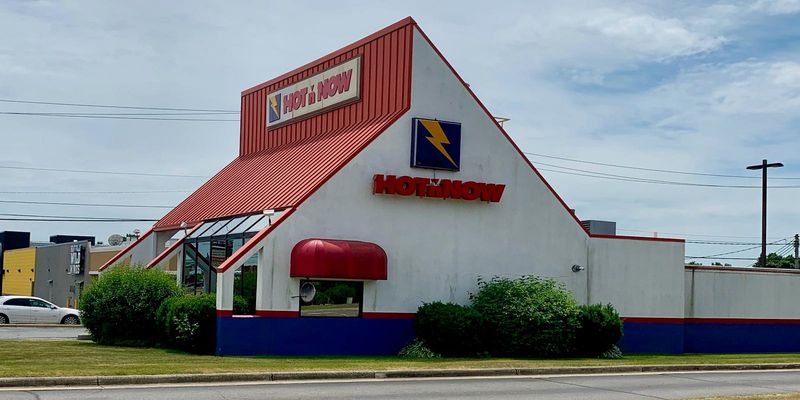
Hot ‘n Now, known for its quick and affordable 39-cent burgers, was ahead of its time with drive-thru-only locations.
The chain’s efficient model appealed to budget-conscious diners seeking convenience without sacrificing quality. Its disappearance left a gap for those who valued speed and simplicity.
A revival could leverage its innovative roots, offering a unique dining experience for busy modern consumers. Hot ‘n Now’s story highlights the potential of streamlined service in the fast-food industry.
16. ShowBiz Pizza Place

ShowBiz Pizza Place, before Chuck E. Cheese, was the go-to spot for kid-birthday parties. Arcade games and the animatronic Rock-afire Explosion band made it a chaotic fun zone.
Its lively environment and engaging entertainment created unforgettable memories for children and parents alike.
Reviving ShowBiz could bring back the interactive and whimsical fun of childhood celebrations. Its legacy is a testament to the enduring appeal of immersive entertainment in dining experiences.
